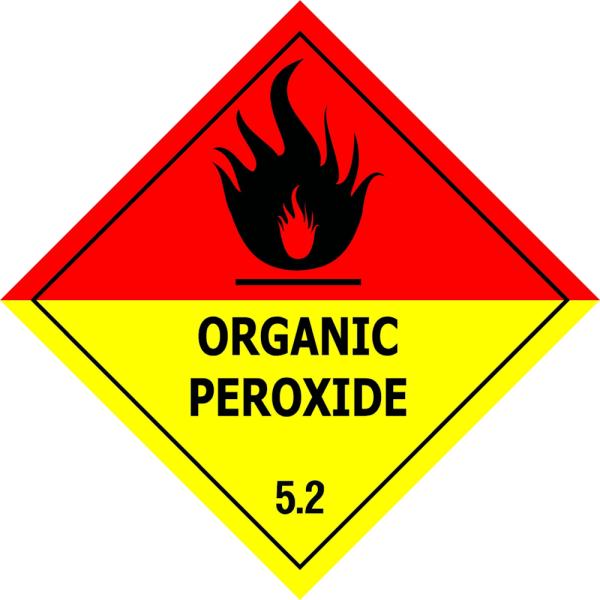Organic peroxides present unique challenges for transport due to their inherent chemical instability and temperature sensitivity. These Class 5.2 substances require careful handling and specific precautions under ADR regulations to ensure safe carriage by road.

Understanding Organic Peroxides
Organic peroxides are substances containing the bivalent -O-O structure, which makes them both oxygen-rich and thermally unstable. Think of them as compounds that contain their own oxygen supply for combustion, making them particularly hazardous if not properly controlled. Many organic peroxides used in industry, such as those for polymer production or chemical synthesis, require strict temperature control during transport to prevent dangerous decomposition.
Temperature Control Requirements
One of the most critical aspects of transporting organic peroxides is temperature control. Each organic peroxide has a Self-Accelerating Decomposition Temperature (SADT), above which the substance begins to decompose rapidly. The control temperature is typically set 20°C below the SADT, with an emergency temperature 10°C below the SADT.
For example, if an organic peroxide has an SADT of 35°C, the control temperature would be 15°C, and the emergency temperature would be 25°C. Vehicles carrying temperature-controlled organic peroxides must be equipped with suitable refrigeration units or cooling systems capable of maintaining these temperatures throughout the journey.
Packaging and Vehicle Requirements
Organic peroxides must be transported in UN-approved packaging that allows for pressure relief in case of decomposition. Vehicles carrying organic peroxides need to be well-ventilated and equipped with temperature monitoring systems. The driver must be able to monitor the load temperature from the cab, with clear alert systems if temperatures begin to rise above control levels.
Documentation and Labelling
Transport documents must clearly indicate:
- The technical name of the organic peroxide
- The control and emergency temperatures
- The UN number and proper shipping name
- The classification code (P1 or P2)
Vehicles must display the Class 5.2 placard (red upper half, yellow lower half) and, where required, the elevated temperature mark.
Emergency Procedures
In the event of temperature control failure or other emergencies, drivers must follow specific procedures outlined in their written instructions. This typically includes:
- Parking the vehicle in a safe location away from populated areas
- Notifying emergency services and the operator immediately
- Monitoring temperature changes if safe to do so
- Preventing direct sunlight on temperature-controlled loads
- Maintaining safe distances and preventing access to the danger area
Training Requirements
Drivers carrying organic peroxides must hold a valid ADR certificate with the appropriate Class 5.2 training. This includes understanding the specific hazards of organic peroxides, temperature control systems, and emergency response procedures.
Remember, organic peroxides can be as unpredictable as they are useful. Proper adherence to ADR requirements isn’t just about compliance; it’s about ensuring everyone’s safety on the road.
By following these ADR requirements carefully, drivers can ensure the safe transport of these sensitive materials across the UK’s roads, protecting both themselves and other road users from the unique hazards posed by organic peroxides.
